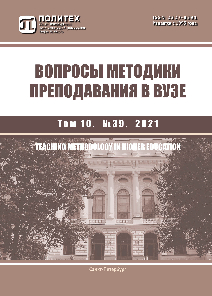Building basic global competence of Russian students on the material of the Chinese language and culture
Urgent problems of teaching Russian students the Chinese language and culture are considered. There is an increase in the number of people wishing to learn Chinese as evident from statistical data on enrollment in Shentang Chinese language course in St. Petersburg. The concept of global competence formed in students of 15−25 years old when learning the Chinese language and culture, is given. It is shown that cultural aspects prevail in the content model of global competence, in particular, students' awareness of intercultural differences leading to an understanding of cultural diversity as a personal value. The deep mutual connection of linguistic and cultural realities is emphasized, which is concretized by the use of the artificial language pinyin as the official Latin transcription of lexical units at the initial stage of learning the Chinese language. Examples are given of using pinyin to introduce the elements of culturally specific content, such as Chinese proverbs, as well as to read subtitles when showing thematic video clips to students.



